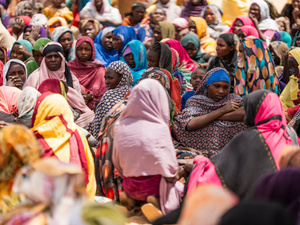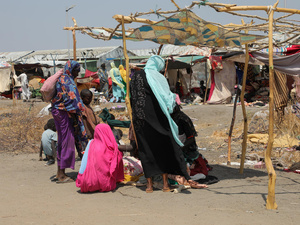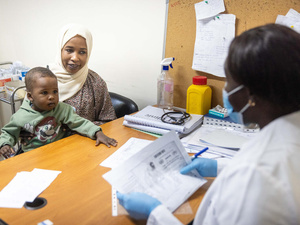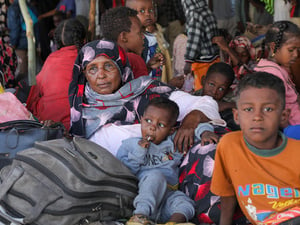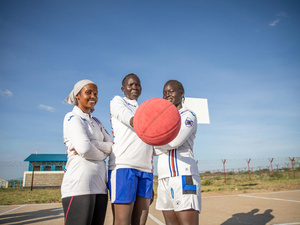Emergency teams to verify displacement reports in north-east Somalia and possible influx of Somalis into eastern Ethiopia
Emergency teams to verify displacement reports in north-east Somalia and possible influx of Somalis into eastern Ethiopia
UNHCR is airlifting relief supplies and has dispatched two emergency teams - to Somalia and Ethiopia - to verify reports of new displacement in north-east Somalia and to check reports of a possible influx of Somali refugees into eastern Ethiopia.
On Wednesday, a UNHCR four-person emergency team reached south Galkayo in Somalia's Puntland region in advance of a series of joint assessment missions planned by humanitarian agencies to assess the scale of new displacement and to address the needs of displaced Somalis in the south of Puntland, bordering strife-torn central Somalia.
Following the fighting in Mogadishu in late December that led to the arrival in the Somali capital of the Transitional Federal Government (TFG), we have received reports of up to 10,000 newly displaced Somalis in Galkayo town. They join an estimated 15,000 internally displaced people (IDPs) who were already in 14 established settlements in and around the town. The 15,000 IDPs were displaced prior to the current round of conflict and are part of an overall IDP population in the border region of Puntland and Central Somalia of some 80,000. In all of Somalia, there are more than 400,000 internally displaced people, most of them displaced in earlier conflicts and by drought in South and Central Somalia.
A visit to one of the 14 settlements in Galkayo on Wednesday confirmed a pressing need for shelter and other basic items such as plastic sheeting, jerry cans, mats, blankets and kitchen sets. The UNHCR emergency team is continuing its assessment of needs and numbers in all 14 IDP settlements while making arrangements for an emergency distribution of relief supplies for up to 25,000 displaced people in the area.
Next week, we plan to airlift 5,810 plastic sheets, 1,760 sleeping mats and 1,000 kitchen sets from our stockpiles in Nairobi, as well as other items provided by UNICEF. We've already got 2,000 plastic sheets on the ground, delivered by air yesterday.
UNHCR is also preparing to airlift emergency shelter material from our stockpiles in Dubai for IDPs in southern Somalia once air operations are possible in Kismayo. These supplies will supplement other material to be sent to the area by other UN agencies.
In Ethiopia, a UNHCR emergency team travelled yesterday (Thursday) to the Somali region of the east to look into reports of new arrivals from Somalia and to conduct preliminary screening activities of any new asylum seekers. We have no word from them yet.
The emergency response team, composed of staff from around the world and from the UNHCR office in Addis Ababa, will stay in eastern Ethiopia for about a month.
There are currently more than 97,300 refugees in Ethiopia, mainly from Sudan, with 16,400 from Somalia in Kebribeyah camp, near Jijiga, in the east. At the peak of the Somali emergency in the late 80s and early 90s, there were some 628,000 Somali refugees in eight camps in eastern Ethiopia. The majority of these refugees have returned home since 1997, when UNHCR began repatriating refugees to north-western Somalia (the self-declared Republic of Somaliland), and seven of the eight refugee camps have already been closed.
In Kenya, UNHCR is set to join a UN-Kenyan Government border assessment that was planned for this week but is now rescheduled to next week. It will assess the situation in Somalia and look into the possibility of cross-border assistance - security permitting. We remain extremely worried about the humanitarian situation inside Somalia. Yesterday (Thursday) we received reports of an estimated 100 wounded people who were reported to be making their way towards the border with Kenya for medical help. They were reportedly wounded in Monday's air strikes between Afmadow and Doble. On receiving these reports yesterday, UNHCR staff immediately informed the government and appealed for assistance for this group if they seek entry into Kenya, whose border with Somalia remains closed.
In another development, UNHCR welcomes a judgement issued yesterday (Thursday) by the European Court of Human Rights in Strasbourg which clarifies the protection needs of Somalis outside their country.
In a case concerning a rejected Somali asylum seeker in the Netherlands, who belonged to the Ashraf minority group and was originally from Mogadishu, the Court ruled that the Netherlands could not return him to a region in Northern Somalia that was considered to be 'relatively safe' by the Dutch authorities.
According to the Court, expelling him to Northern Somalia would amount to a violation of Article 3 of the European Human Rights Convention. The Court ruling thus supports UNHCR's view that there is no internal flight alternative within Somalia.



